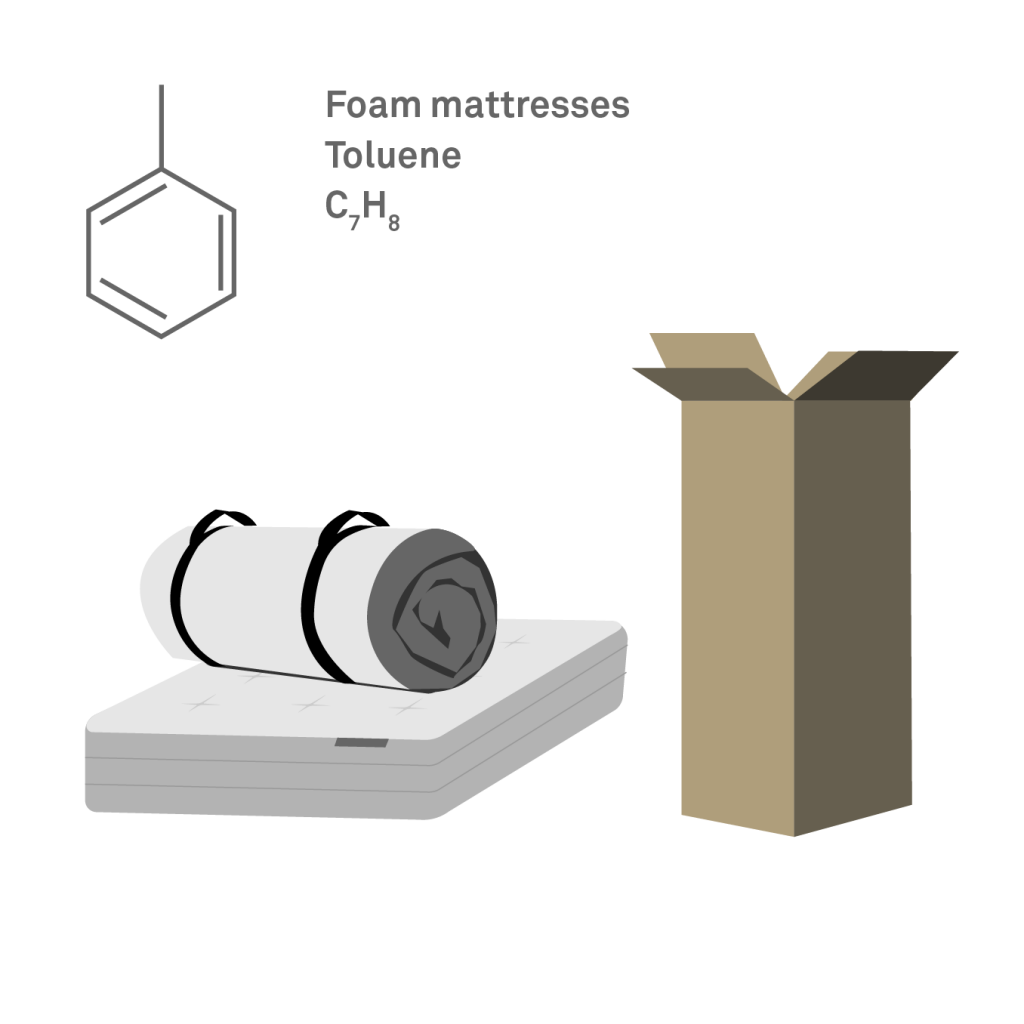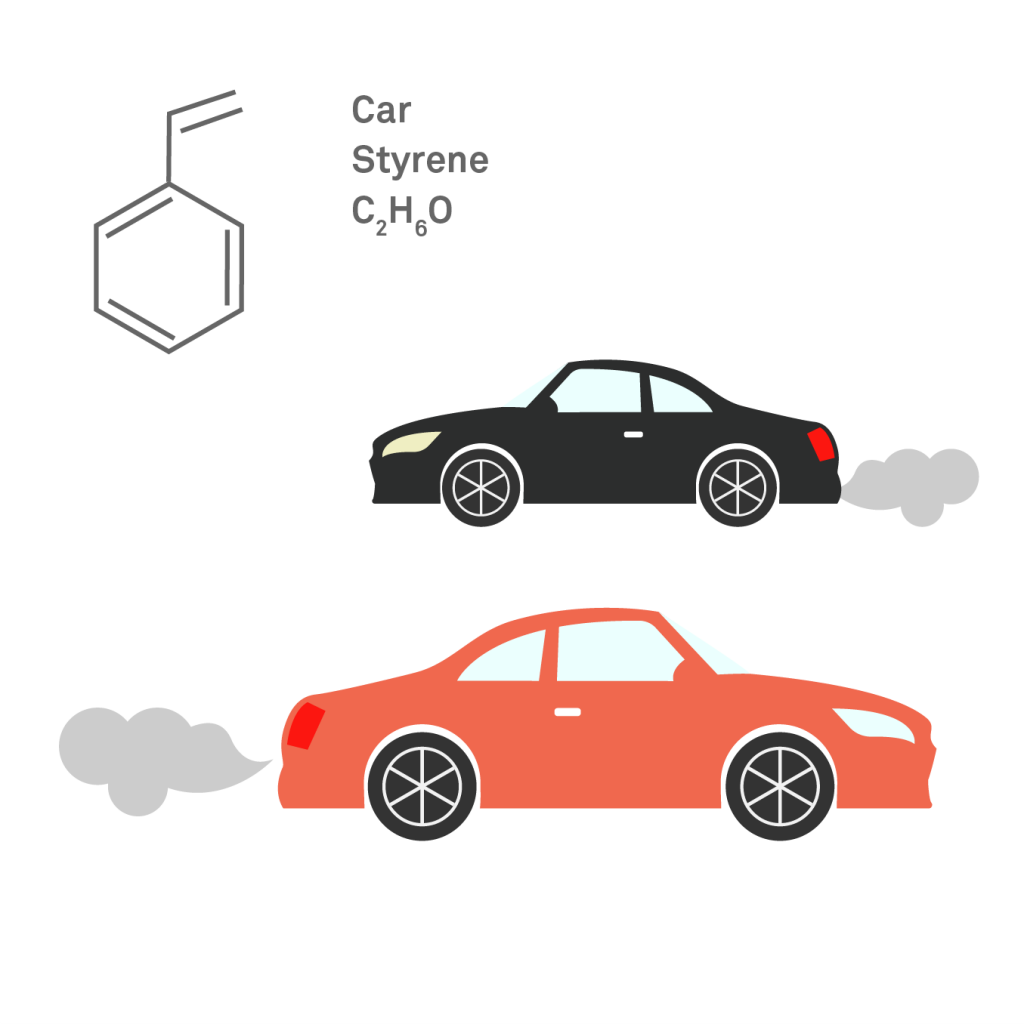Have you ever wondered what causes the smell that we associate with new products? Whether it is a fresh coat of paint or a new carpet, mattress or piece of furniture, you have probably noticed that some manufactured goods typically emit a certain smell when we add them to our homes.
The cause of this smell is off-gassing, and it happens when the new products that you bring into your home release potentially-harmful chemicals into the air. Below, learn which products are known for off-gassing and what you can do to keep toxic emissions from impacting the air quality in your home.
Off-gassing vs. outgassing: what’s the difference?
Some organizations or manufacturers may use the word outgassing instead of off-gassing, but the two terms are both used to describe the release of harmful gases trapped in products and materials during production. However, off-gassing is commonly used when discussing indoor air quality and manufactured household products and furniture. Outgassing, on the other hand, is used more often in an industrial or lab setting. In this post, we address household off-gassing and the adverse health effects associated with it.
VOCs and off-gassing
The smell caused by off-gassing can be indicative of a harmful indoor air quality issue. Off-gassing happens because organic chemicals in liquid or solid form can be trapped during the manufacture of certain goods. Eventually, the product will release these chemicals as particulate matter and gases, called volatile organic compounds (VOCs).
The EPA estimates that VOC concentrations in indoor air are typically two to five times higher than those found in outdoor air. Because of the prevalence of VOCs in manufacturing, a wide variety of products can be potential sources of off-gassing in your home, including paints, mattresses and carpets.
These VOCs evaporate, or off-gas, at room temperature, causing that “new” smell that most consumers are familiar with. Common VOCs found in the home are benzene, toluene, styrene and formaldehyde.
Note: You cannot always smell the presence of VOCs in your air. Just because a product does not smell—or has stopped smelling—it does not mean that it is not emitting VOCs.
Off-gassing and your health
Exposure to VOCs can have short- and long-term effects on your health. Individual effects will vary depending on the type of VOC, the concentration in the air and the length of exposure time. VOCs can cause headaches, nausea, loss of coordination and eye, nose and throat irritation. More serious health effects can include damage to the kidneys, liver or central nervous system, as well as some forms of cancer.
Symptoms of VOC exposure can include:
- Skin irritation or allergic reaction
- Eye irritation
- Difficulty breathing
- Sore throat
- Headaches
- Nausea and vomiting
- Fatigue
- Dizziness
- Nosebleeds
Additionally, some VOCs are suspected or known carcinogens. These carcinogenic compounds, such as formaldehyde, may have more household sources than you expect. For example, formaldehyde can be found in the paint on your walls, pressed-wood furniture, carpeting adhesives and even some clothing.
Common sources of household off-gassing
VOCs do not only come from obvious sources such as cleaning chemicals and wall paint. In fact, they can even be found in some products that advertise as “green” or “all-natural.” Because of the wide range of products that contain VOCs, it can seem almost impossible to avoid off-gassing altogether. However, as an informed consumer, you can identify and mitigate sources of off-gassing in your home. Below, find some of the most common products known for off-gassing.
Mattresses

Online “bed-in-a-box” mattress companies are becoming increasingly popular, meaning that more and more people are familiar with the just-unboxed smell of a new memory foam mattress. The mattress usually arrives in a long box, rolled up and sealed in plastic. Once you open the plastic and allow the mattress to unroll and expand to its full size, you will probably start to smell the off-gassing of different VOCs from the foam and adhesives found in the mattress.
Many mattress brands such as Purple, Layla and Tuft & Needle have pages on their websites explaining the VOC certifications and standards they adhere to. Some common certifications to look for are: CertiPUR-US, GREENGUARD Gold and STANDARD 100 by OEKO-TEX
Parents should take special care when buying a new mattress for their child’s crib, as baby mattresses can be significant sources of infant VOC exposure. Studies have found that infant mattresses—especially those made with polyurethane foam, which contains the hydrocarbon toluene—are a major off-gassing culprit (Boor, et. al, 2014).
Furniture, upholstery and curtains

According to the CDC, furniture made from pressed wood, such as particle board and plywood, contains formaldehyde that can be off-gassed in your home. Pressed wood is used by manufacturers of build-at-home furniture, such as Ikea, and even in some cribs and other baby room furnishings. Formaldehyde can also be found in permanent-press fabrics such as those used for curtains and furniture upholstery.
Carpet

That “new carpet” smell that so many people associate with a fresh, clean carpet may not be as innocent as you think. The adhesives and foam pads used in carpet installation can contain toxic organic chemicals that off-gas as VOCs in your home. Because of this, some states have laws that designate VOC emissions limits for all new carpet installations.
Cars

New cars can be significant sources of off-gassing. Many car parts are made with polystyrene and other organic chemical compounds that emit VOCs, especially when the car is new. Vehicles that are exposed to high temperatures and low airflow will off-gas VOCs at higher concentrations.
Electronics
The electronics in your home can be a source of off-gassing as well, especially ones that use triphenyl phosphate to insulate the wires. A UC Berkeley study found that office electronics, such as computers and printers—especially newer ones—may emit a wide range of VOCs that can accumulate in the air at potentially-harmful room concentrations.
Other household products

Other common household products that may contain VOCs include:
- Paint
- Dryer sheets
- Air fresheners
- Cleaning products
- Nail polish remover
- Cosmetics and personal care products
- Household cleaners
- Markers, Sharpies and other art supplies
These household products can contain high levels of volatile organic compounds including acetone, ethyl alcohol, and isopropyl alcohol that can off-gas into your air even when you are not using them. Air fresheners and cleaning sprays can be of particular concern but, fortunately, there are plenty of ways to make your home smell fresh without sacrificing air quality.
Will off-gassing from my new purchases make me sick?
The answer is complex and depends on the products in question, as well as the VOCs that they emit. Many types of furniture do their heaviest off-gassing for about a month after they are made. On the other hand, some products may continue off-gassing for years. Fortunately, there are ways that you can minimize the adverse health effects caused by bringing VOC-containing products into your home.
How to prevent, reduce and speed-up off-gassing
The best way to decrease the amount of off-gassing in your home is to look for products, such as paint and cleaning compounds, with reduced VOCs or no VOCs at all. However, these products may not always be cost-effective, or easy to find. If you cannot avoid buying products that will emit VOCs into the air in your home, try these steps to minimize your exposure:
- Look for products that have third-party certifications such as those from GREENGUARD, Scientific Certification Systems (SCS) and SGS Group that designate goods that are low to no-emission.
- Ask manufacturers to air out items such as furniture, mattresses and carpets before delivering them to your home. If this is not possible, you can unwrap new products in a large, well-ventilated space, or even outdoors. Take special care to do this with all furniture and goods that will be placed in an infant or child’s room.
- Buy used furniture. Most pre-owned furniture has already gone through the most severe stages of off-gassing.
- Increasing the ventilation in your house can reduce the VOCs in the air quickly. You can do this by opening windows and doors, as well as turning on fans and air filtration systems.
- To decrease off-gassing of paints and cleaning products, only purchase as much as you need for each use. Throw away any leftover product at your city’s hazardous waste collection sites. If you need to keep high-VOC products around, try storing them away from your house, such as in a detached shed or garage.
- Try out alternatives to your chemical cleaning products, such as baking soda and white vinegar. Find air-friendly ways to remove musty odors from your home and clothes.
- Installing the right air purifier for VOCs (only a few are designed for this purpose) can help remove VOCs that have already made it into your indoor air supply. The Molekule air purifier technology has been tested and confirmed to reduce levels of VOCs like toluene down to undetectable levels (see what the science says about the Molekule PECO technology vs. VOCs).
With so many household goods known for VOCs and off-gassing, it can be easy to lose confidence in the indoor air quality of your home. However, when you pay attention to the VOCs that you bring into your home and follow the tips listed above, you can improve the quality of the air that you breathe. Off-gassing may not be completely unavoidable but, with a little extra effort, you can work to keep airborne VOCs from affecting the health of you and your family.












